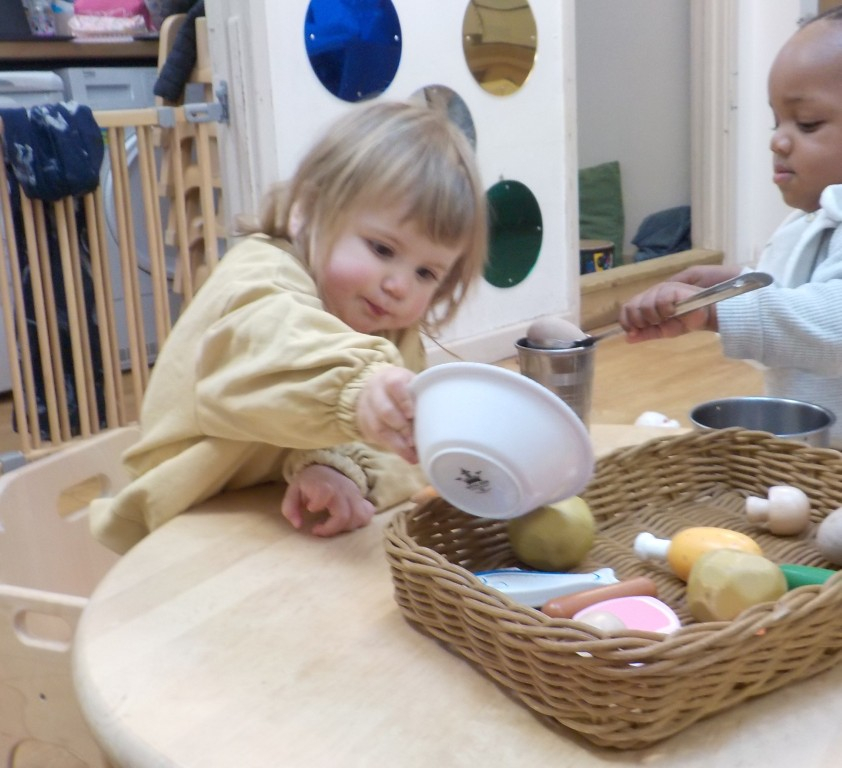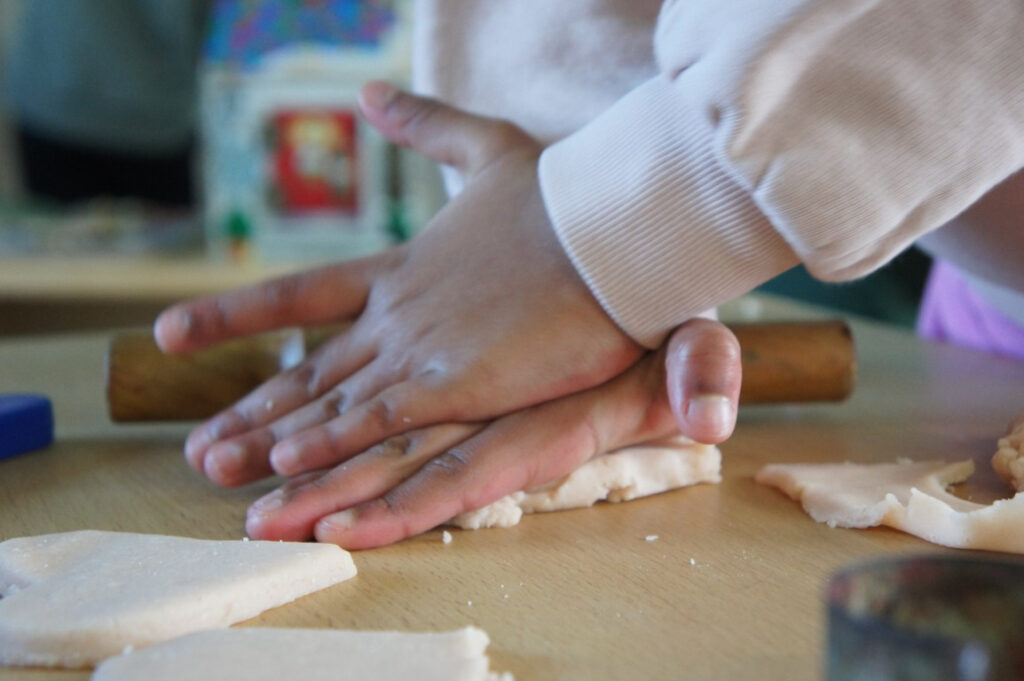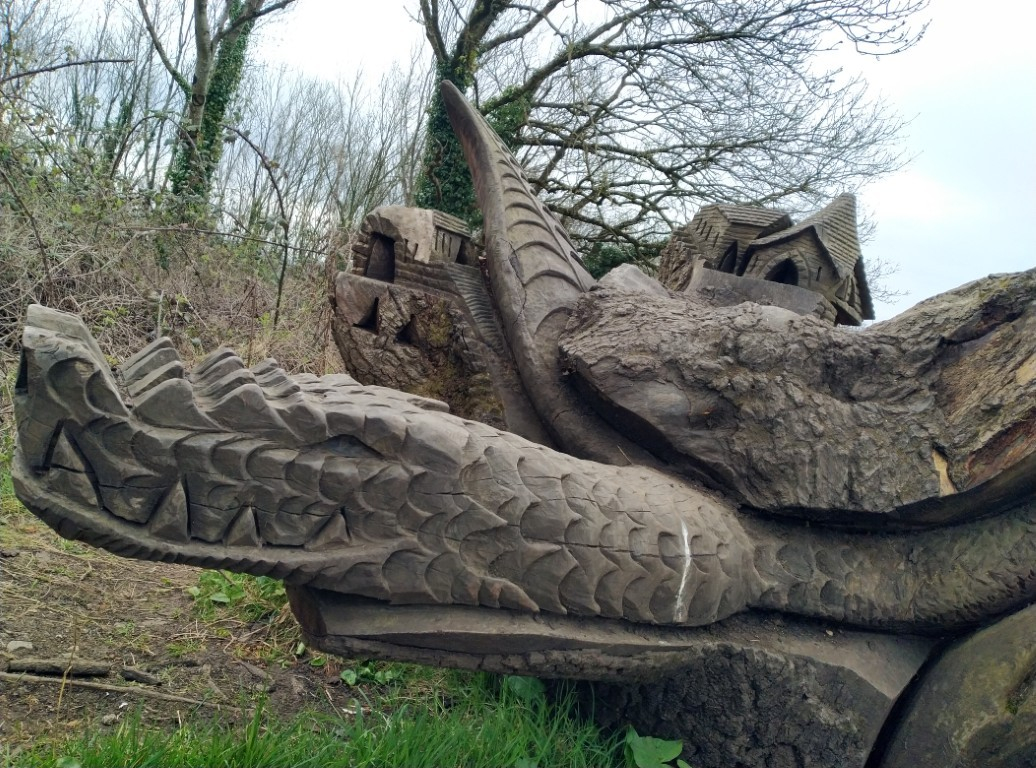Baby Room 1: Physical Development and Sensory Exploration
Children in Baby Room 1 at St Pauls have been developing their physical skills through biking, brushing, driving and digging activities. They have enjoyed zooming down the ramp and pushing bikes back up, building their gross motor skills and spatial awareness. Sensory exploration has nurtured their curious nature as they investigate what happens when torches shine through colourful objects, on their bodies, and in dark spaces. These activities support the EYFS Physical Development area, helping children gain control of their movements while developing their Understanding of the World through scientific exploration with light. The children have also engaged with core books like “Dig Dig Digging”, supporting early literacy development.
Baby Room 2: Movement and Community Connection

Children in Baby Room 2 have been actively moving throughout their environment – crawling on the floor, climbing up slides, swinging, climbing, pulling, pushing, jumping and bouncing! These varied movements are essential for developing core strength and coordination, aligning with the Physical Development area of EYFS. The children have been connecting with their community through outdoor excursions, embracing St Pauls’ philosophy that “the curriculum is inside the child and outside the window.” Through imitative play and symbolic representation, children make vital connections between symbols and their real-world meanings – a foundational aspect of Communication and Language development in the EYFS framework.
Early Years 2 Room: Nature Exploration and Creative Expression
The woodland environment has offered unique opportunities for children in Early Years 2 Room to experience extended vistas, observe the horizon, and engage with nature’s elements – weather patterns, natural sounds, and changing light conditions. This supports Understanding the World in the EYFS. Creative expression has flourished through mark-making explorations with various materials, allowing children’s personalities, preferences, and imaginations to shine through – directly supporting Expressive Arts and Design within the EYFS framework.
Nursery School Room 1: Cultural Awareness and Creative Development
Children in Nursery School Room 1 have been venturing into woodland areas, fostering curiosity about the natural world and expanding children’s awareness of horizons and distances. Cultural celebrations have included Eid, with Fatima and her peers sharing prayer practices and Eid traditions, supporting the Understanding the World aspect of EYFS through cultural awareness. Following a Research Project with Soundwaves, musical development has flourished through song repertoire building, responsive instrumentation, vocal exploration, and rhythm identification – enriching the Expressive Arts and Design area. Block play has emerged as a comprehensive learning tool, supporting social, emotional, cognitive, and physical development through increasingly complex constructions including bridges, towers, and symmetrical patterns – touching multiple EYFS areas.
Nursery School Room 2: Literacy, Mathematics and Scientific Inquiry
Mark-making activities, in Nursery School Room 2, using diverse materials (charcoal, paint, pens, oil pastels, cotton buds) have reinforced the understanding that “scribbles are products of systematic investigation, rather than haphazard actions.” Mathematical learning has focused on pattern recognition across different modalities – visual, sound, time, number, movement and dance – helping children understand underlying rules, repetition, regularity and relationships – supporting the Mathematics area of EYFS. Scientific inquiry through observation of tadpoles and plants has encouraged children to develop their theories about growth and change, fulfilling the St Paul’s Promise of using all senses in scientific exploration. The use of songs and rhymes in Big Circle time has specifically targeted phonological awareness through rhythm, rhyme and alliteration – supporting early Literacy development.
Nursery School Room 3: Tactile Exploration and Material Manipulation

Children in Nursery School Room 3 (The Pod) have been deeply engaged in tactile exploration, discovering how materials can be manipulated with their fingers and hands. Clay work has invited curiosity about how this natural material responds to manipulation, with children using their hands directly and experimenting with specialised tools for shaping and forming. These experiences support both Physical Development through fine motor control and Expressive Arts and Design through creative manipulation of materials, two key areas of the EYFS framework.
Throughout all rooms at St Pauls Nursery School, the child-centered approach ensures learning experiences are meaningful, engaging, and responsive to children’s interests while supporting all areas of the Early Years Foundation Stage curriculum.

